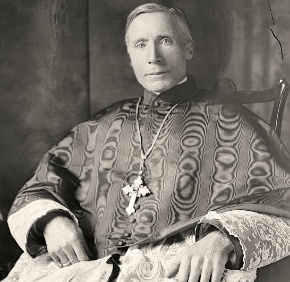By George P. Matysek Jr.
gmatysek@CatholicReview.org
Twitter: @ReviewMatysek
The Baltimore seminary that produced some of this nation’s greatest churchmen – early circuit-riding missionaries, the founder of the Knights of Columbus and an international expert on the Gospel of John among them – had its humble beginning 225 years ago this month.
St. Mary’s Seminary, the first Catholic seminary in the country, opened for classes Oct. 3, 1791, inside a small building on a property known as the One Mile Tavern along what is now Pennsylvania Avenue. There were initially just five seminarians enrolled.
The seminary was the result of the vision of Baltimore Archbishop John Carroll, the nation’s founding bishop, who invited Sulpicians to establish the educational institution in a fledgling diocese then serving the entire country.
The Sulpicians, an international association of priests based in France who specialize in the education of future clergy, had faced intense persecution during the French Revolution then raging in Europe. According to an official history, 11 members of the society were martyred during the revolution and later beatified.
Over the decades, the small seminary expanded along nearby Paca Street, growing into a massive campus that educated countless seminarians.
Among those who studied at St. Mary’s were Father Demetrius Gallitzin, a Russian prince who traveled a 250-mile radius in Western Maryland and Pennsylvania on horseback as the “Apostle of the Alleghenies;” Father Michael J. McGivney, a champion of immigrant rights and founder of the Knights of Columbus; and Father Raymond Brown, a biblical scholar and world-renowned authority on the Gospel of John who also taught at St. Mary’s.
A new St. Mary’s Seminary opened in Roland Park in 1929, where seminarians studied theology after completing their philosophy requirements at the Paca Street location. The original site eventually closed in 1969. Most of the seminary property was given to the city for the cost of demolishing the building, creating a green space known as St. Mary’s Park.
The only original building still standing is the chapel, which was designed by the famous French architect, Maximilian Godefroy. Also standing near the chapel is the Mother Seton House, where St. Elizabeth Ann Seton lived and ran a boarding school for girls. The saint arrived in Baltimore the same day the chapel was dedicated in 1808.
Celebrating the 225th anniversary of the arrival of the Sulpicians to Baltimore, the priests of the society are donating to the city three storyboards that tell the history of St. Mary’s Park. A dedication ceremony was to be held Oct. 1.
Read more stories from ‘Our Back Pages’ here.


